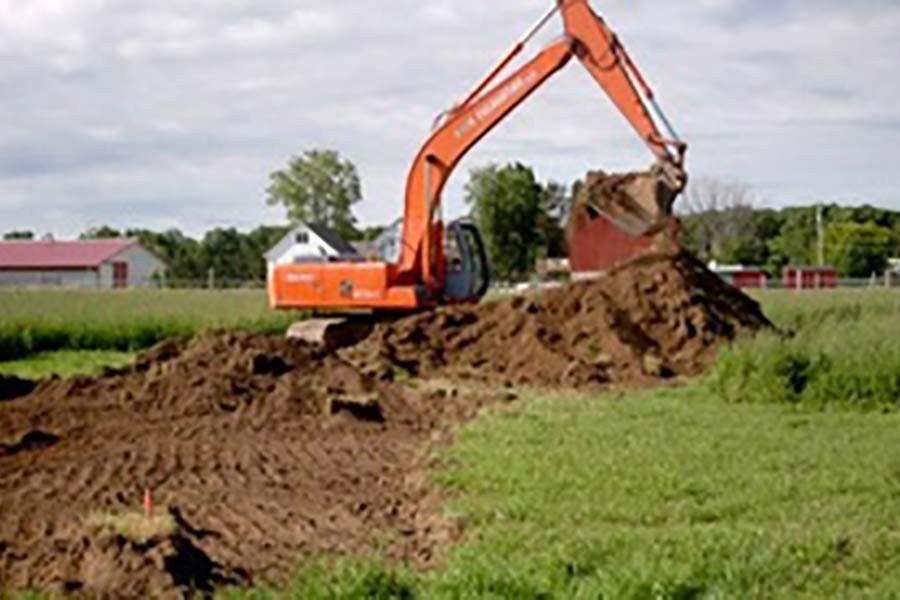Nearly 69,000 hectares of agricultural land have been shrinking annually due to rapid industrialisation, unplanned urbanisation and increase in rural settlements. Such a situation is pushing the country's food security at risk.
A report on the loss of agricultural land based on the study carried out by Soil Resource Development Institute (SRDI) indicated a regular and increasingly declining trend in land available for agriculture. Between 1976 and 2000, around 13,412 hectares of agricultural land was lost.
In contrast, in the subsequent period from 2000 to 2010, over 30,000 hectares of land were lost in only ten years. Rapid urbanisation with new roads and highways as well as the growing population are occupying a vast tract of agricultural land.
However, through the efforts of Bangladesh Rice Research Institute (BRRI) and the Bangladesh Agriculture Research Council (BARC), the country' crop production per unit of land has considerably increased year by year. This has helped to negate the effect of the continuing decline in the availability of arable land all over country.
As urban areas worldwide continue to grow, the population spreads to the surrounding rural and suburban areas. Many farmers give in to the economic pressures when they realise that the land that they are farming can provide them with substantial cash and they would no longer be engaged in a practice that is at the mercy of weather and economic conditions.
The loss of agricultural land to urbanisation means an increase in environmental problems such as air quality, transportation problems, loss of critical habitat and green space, and a degradation of water quality. The water quality problem is typically the result of non-point source pollution that has diverse sources. Another reason for which agricultural land is lost is soil degradation. Soil degradation is the loss of a soil's natural fertility. When this occurs, productivity of the land decreases, without added use of fertilisers and other chemicals.
In fact, urbanisation affects food production in two ways-by removing agricultural land from cultivation, as cities expand, and by reducing the number of family farms, as more farmers move to cities. The spread of cities alone consumes enormous tracts of farmland all over the world. Between 1987 and 1992, for example, China lost close to one million hectares of farmland each year to urbanisation and the expansion of roads and industries. In the US, urban sprawl takes over nearly 400,000 hectares of farmland each year.
As for Bangladesh, long-term outlook appears to be bleak as unplanned growth of population is complicating the process of meeting the demand for food, basic health requirements and educational facilities -- triggering unemployment and social unrest. The prospect is really discouraging as resources are outrunning habitants.
What is alarming is that the country, with the world's highest density of population, is fast losing arable land due to growing industrialisation and rapid encroachment of human habitat on farming areas. The country's fast growing population is now looking for new land to build homes while entrepreneurs are going to remote areas of the countryside to set up factories.
There will be no cultivable land left in Bangladesh in 50 years if lands are taken away for non-farm purposes at the current annual rate. If the trend is not reversed now, the country would permanently lose its food security, making its poor population more vulnerable to volatile international commodity prices.
In order to reverse this trend, the government has taken some steps including banning use of arable land for purposes other than agriculture. This is no doubt a laudable step. A high-level committee suggested that the factories and educational institutions that have already been built should now go vertical, instead of grabbing more arable land. But the government is failing to monitor how much arable land is being transferred for use other than agricultural purposes, as it has dearth of manpower.
The dwindling size of farms, rise in landlessness and constant depletion of farmland are posing formidable threats to Bangladesh's agriculture, increasing poverty and trapping many ultra-poor people in a vicious circle. The average farm size has been reduced to less than 0.6 hectares and the percentage of landless people stands at 58 in a country where nearly 80 per cent of the ultra-poor live in rural areas.
Worries about farmland depletion at an alarming rate have fallen into deaf ears to, while calls for ensuring optimum utilisation of arable land and bringing fallow land under cultivation remain in rhetoric alone. Successive governments concentrated all their focus on higher production of rice, while import bills for fuel, cooking oils and pulses continued to inflate due to global price volatility in recent years.
Agricultural land loss is a growing problem for Bangladesh with the increase in population. The ironic thing about agricultural land loss is that the land is going away because of a growing population that will require more agricultural products to sustain it. The causes of agricultural land loss are often rooted in the growth strategies of urban areas and are facilitated by politics and economics. The mitigation strategy for the problem can be found in the same places.
Such decline in arable land is worrisome. The authorities concerned should go for regular surveys of arable land to present an accurate figure so that necessary steps can be taken. There is also a need for going vertical to build homes and other infrastructure in order to stop farmland depletion.


